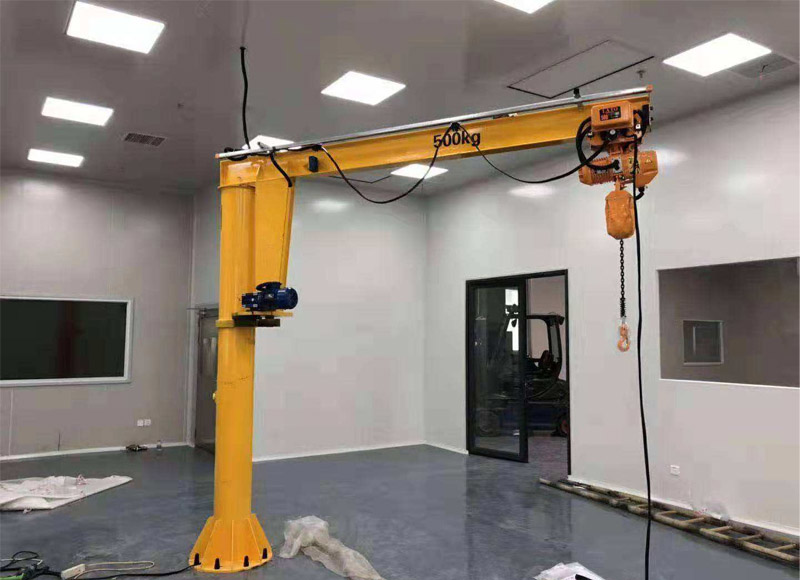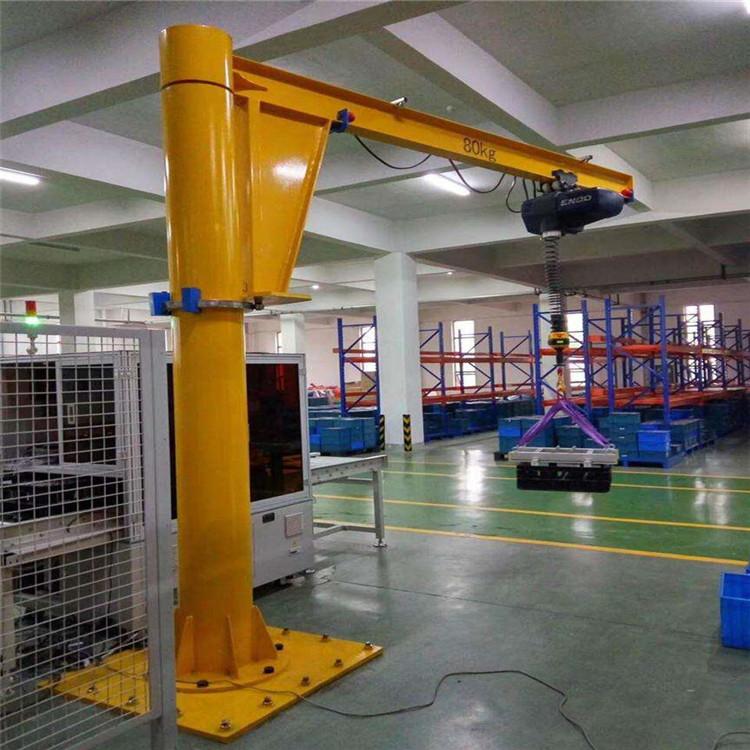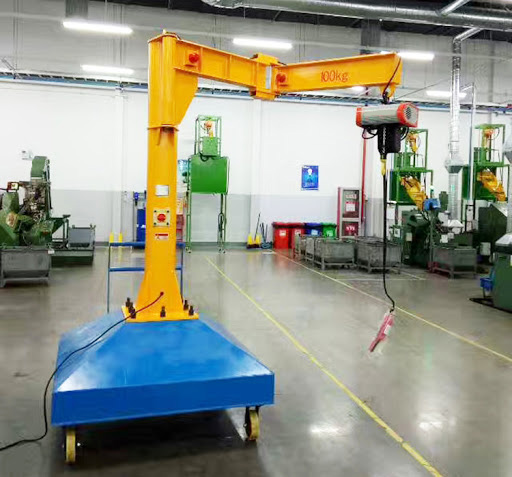Affordable Portable Small Jib Crane
Portable jib crane is a small, portable lifting equipment, usually used in situations that require frequent movement and temporary lifting, such as construction sites, warehouses, workshops, etc. It is characterized by compact structure, simple operation, quick installation and disassembly, and easy portability and movement. This kind of crane usually consists of jib, lifting mechanism, supporting legs, control system and other parts. It can be lifted electrically or manually. The lifting weight is usually between hundreds of kilograms and several tons. It is suitable for hoisting small materials.

What are the types of affordable small jib cranes
● Fixed jib crane: It is the most common form. It consists of a hook, jib, pulley block, rotating base and fixed bracket. Fixed jib cranes have the advantages of simple structure, affordable price, and easy operation. However, the lifting height and rotation range are relatively small, and they are generally suitable for small workshops, warehouses and other places.
● Mobile jib crane: Based on the fixed type, traveling wheels are added, which can move freely within a certain range. Mobile jib cranes can meet the needs of larger lifting height and rotation range, and are suitable for large workshops, logistics centers and other places. But the price is relatively high, and the operation and maintenance costs are also high.
● Manual jib crane: It is manually operated, has a simple structure and is affordable. However, manual jib cranes are more laborious to operate and have lower work efficiency. They are generally suitable for hoisting small and lightweight items.
● Electric jib crane: It is driven by an electric motor and has the advantages of easy operation and high work efficiency. Electric jib cranes are suitable for places with large tonnage and high-frequency lifting, but they are relatively expensive and require regular maintenance and upkeep.

Key components and features
● Portable jib cranes are composed of the following key components: jib, hook, base, hydraulic system, control system and safety device.
● The jib is the core part of the crane and is usually made of high-strength steel with sufficient strength and stability.
● Hooks are components used to hang heavy objects. They are usually made of high-strength steel and have sufficient strength and wear resistance.
● The base is the supporting part of the crane, which is usually made of high-strength steel and has sufficient stability and load-bearing capacity.
● The hydraulic system is the power source of the crane and is responsible for providing the powerful power needed to lift heavy objects.
● The control system is the component used to control the work of the crane, including various sensors, controllers, operating handles, etc.
● Safety devices are components installed to ensure the safety of operators and equipment, including limit switches, buffers, emergency stop buttons, etc.
The functions of portable jib cranes are very diverse, mainly including the following: lifting, rotating and telescopic functions. The lifting function is realized through the hydraulic system, and the operator can adjust the height of the hook through the control handle to achieve lifting of heavy objects. The rotation function is realized through the base, and the operator can adjust the angle of the swing arm through the control handle to realize the rotation of the heavy object. The telescopic function is realized through the telescopic device inside the swing arm. The operator can adjust the length of the swing arm as needed to accommodate heavy objects of different sizes.
Main feature
● It is small in size, compact in structure, light in weight, easy to carry and move, and can adapt to the needs of operations in small spaces, improving the flexibility and adaptability of operations.
● Adopting modular design, maintenance is convenient and fast, reducing usage cost and maintenance difficulty.
● It can realize multi-angle rotation and telescopicity, has a wide range of operations, and can meet the lifting needs of different heights and positions.
● It is equipped with a number of safety protection devices, such as overload protection, torque limiter, etc., which effectively avoids safety accidents caused by improper operation or overloading.
● It is widely used in various industries and fields to provide users with efficient and convenient lifting solutions.

Cost of production
The production costs of portable jib cranes mainly include material costs, manufacturing costs and other indirect costs. Among them, material costs mainly include material costs such as steel, hydraulic systems, control systems and other accessories; manufacturing costs mainly include workers’ wages, equipment depreciation and various expenses in the production process; other indirect costs mainly include management expenses and sales expenses. and financial costs, etc. Specifically, the production cost of a portable jib crane depends on parameters such as its size, weight, and performance, as well as factors such as the manufacturer's craftsmanship and scale. Typically, production costs account for a large portion of the sales price. Therefore, in order to reduce production costs, manufacturers need to continuously improve the level and efficiency of production processes, and at the same time strengthen cost management to improve economic benefits and market competitiveness.
